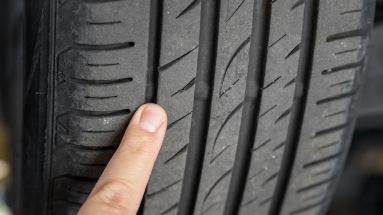Driving in the rain is something Irish drivers have all done and are used to. Even so, driving in heavy rain can be tricky, especially if you’re inexperienced. There are steps to take to keep extra safe in wet conditions. We have created this post to advise you on the best tips for driving in the rain.
Tips for Driving in the Rain
Aquaplaning
Aquaplaning or hydroplaning can be caused by heavy rainfall. A layer of water builds up between a vehicle’s tyres and the road’s surface. The tyres cannot grip the road as they usually would, and this causes a lack of traction. This may cause the driver to lose control, leaving them unable to steer, brake or accelerate.
It can be a terrifying experience and, in an instant, can cause an accident for you and the cars around you. If your car does begin to aquaplane, you should take the following steps immediately:
- Remain calm if possible.
- Never slam down on the brakes.
- Slowly ease off the accelerator and hold the steering wheel in the direction of travel.
- Switch off cruise control.
- When you feel like you have more grip again, put your foot on the brake to slow yourself down.
Do Not Make Unnecessary Journeys
If you know there is bad weather outside or on the way, you should not drive unless necessary. Never drive through water if you are unsure of how deep it is. It can be hazardous, and you can lose control or stall the engine if it is water damaged. You can check weather updates on Met Éireann.
If it is critical for you to drive through a flooded area, you must check your brakes and dry them as soon as possible. To do this, keep pushing on the brake pad lightly while the car is moving, and you should do this for a few kilometres to dry them completely.
Avoid Heavy Braking
It is very dangerous to make sudden movements when a car is travelling in the rain as the vehicle’s reaction time is lowered. You should slowly release your foot off the accelerator and gently push down on the brake when you want to slow down. Pressing your foot down hard on the brakes may cause you to skid and lose control, which could prove fatal.

Watch Your Speed
It would be best if you always kept to the speed limit on the signs, and in wet weather conditions, you should reduce your speed even further. Wet roads are hazardous, especially if you’re travelling at high speed. Your reaction time will be slower in these weather conditions, so it is critical to reduce your speed.
Windscreen Wipers
This may seem obvious, but sometimes, people forget to use their windscreen wipers in the rain. If there are any scraping noises or your wipers leave streaks after use, you should replace them.
Listen for Weather Updates
If you’re planning a journey involving driving in the rain, you should check the weather updates to prepare for any scenario. They will update you if the weather gets even more extreme, and if they do so, you should not travel unless it is critical.
Ensuring Proper Tyre Tread Depth
Check the tyre tread depth before you even set foot in your car. A good tread depth will provide a better grip on wet roads, reducing the risk of hydroplaning. Remember, the minimum legal tread depth is 1.6mm in Ireland.

Distance Between Cars
You should always keep a greater distance between your car and the car in front of you. Braking will become more difficult in the rain due to less grip, so you should allow a more considerable stopping distance.
Avoid Trucks and Buses
Of course, this may not always be possible, but the spray created by larger vehicles can significantly reduce your visibility. It can happen in an instant and could cause an accident.
Pedestrians
Watch out for pedestrians when driving past a puddle. Do not splash them. Many pedestrian accidents occur when it rains, so keep focused and your eyes on the road.
Breakdowns
Breakdowns increase in the rain as the water can damage the electrics and engine. Close the bonnet if you do break down to avoid any further damage. If your engine has cut out after driving through deep water, do not restart it.
Pull Over
You should pull over if the rain starts getting torrential and you’re struggling to see even with the windscreen wipers on. Do not keep driving if you’re having difficulties controlling the car. Wait for the rain to calm down and set off on your journey again.
Using Your Lights
Using your vehicle’s lights wisely can help improve visibility and alert other drivers of your presence.
Headlights
Turning on your headlights is a must during rainy conditions. It helps you see better and makes you more visible to other drivers.
Fog Lights
In heavy rain, using fog lights can help improve visibility. However, turn them off when the rain clears to avoid dazzling other drivers.
We also have you covered with tips on preparing your car for driving during Summer. Get a quote 24/7 for competitive Car Insurance.
